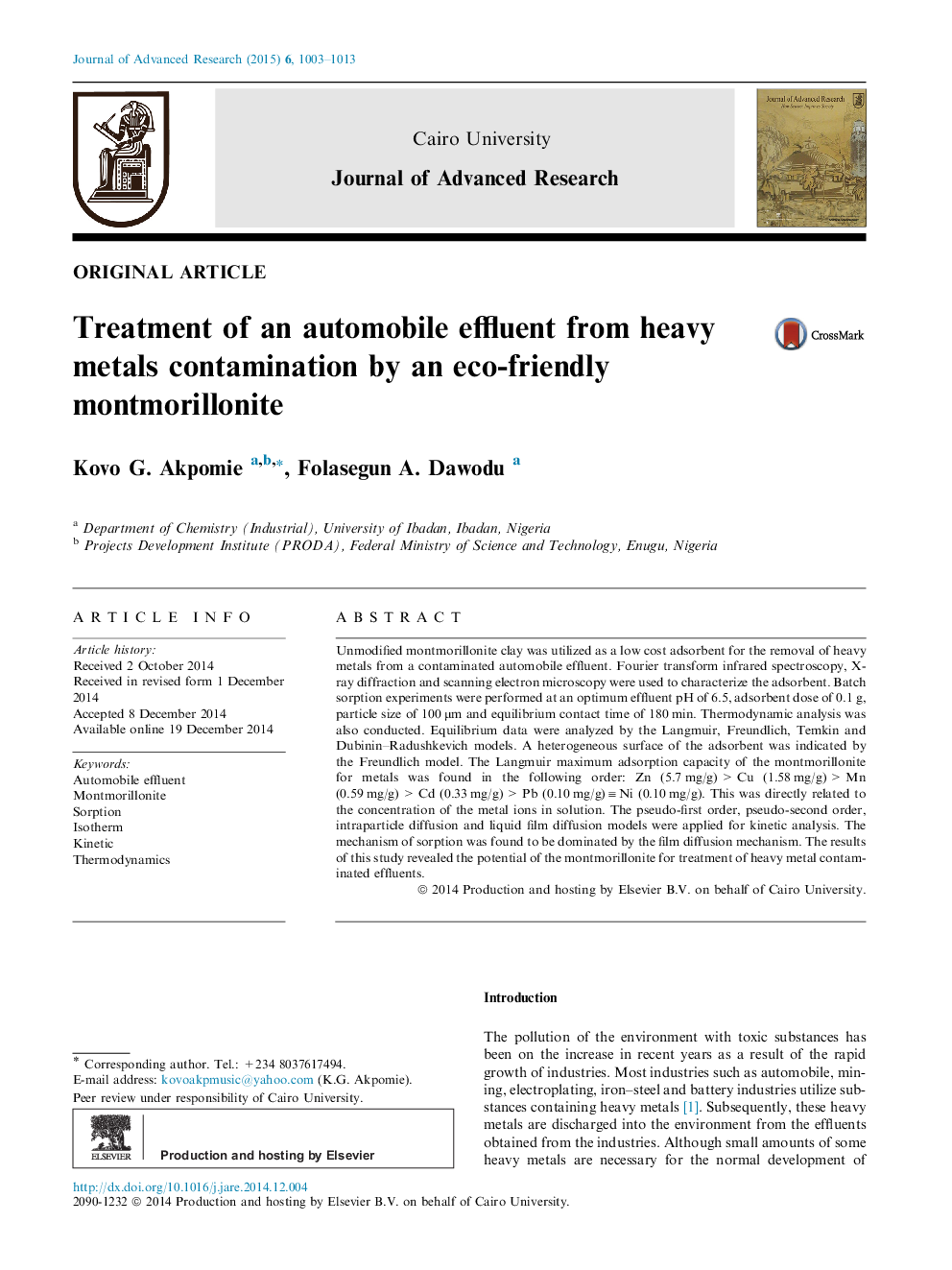| Article ID | Journal | Published Year | Pages | File Type |
|---|---|---|---|---|
| 826091 | Journal of Advanced Research | 2015 | 11 Pages |
Unmodified montmorillonite clay was utilized as a low cost adsorbent for the removal of heavy metals from a contaminated automobile effluent. Fourier transform infrared spectroscopy, X-ray diffraction and scanning electron microscopy were used to characterize the adsorbent. Batch sorption experiments were performed at an optimum effluent pH of 6.5, adsorbent dose of 0.1 g, particle size of 100 μm and equilibrium contact time of 180 min. Thermodynamic analysis was also conducted. Equilibrium data were analyzed by the Langmuir, Freundlich, Temkin and Dubinin–Radushkevich models. A heterogeneous surface of the adsorbent was indicated by the Freundlich model. The Langmuir maximum adsorption capacity of the montmorillonite for metals was found in the following order: Zn (5.7 mg/g) > Cu (1.58 mg/g) > Mn (0.59 mg/g) > Cd (0.33 mg/g) > Pb (0.10 mg/g) ≡ Ni (0.10 mg/g). This was directly related to the concentration of the metal ions in solution. The pseudo-first order, pseudo-second order, intraparticle diffusion and liquid film diffusion models were applied for kinetic analysis. The mechanism of sorption was found to be dominated by the film diffusion mechanism. The results of this study revealed the potential of the montmorillonite for treatment of heavy metal contaminated effluents.
Graphical abstract(A) Infrared spectra, (B) X-ray diffraction, (C) initial pH and (D) particle size.Figure optionsDownload full-size imageDownload as PowerPoint slide
